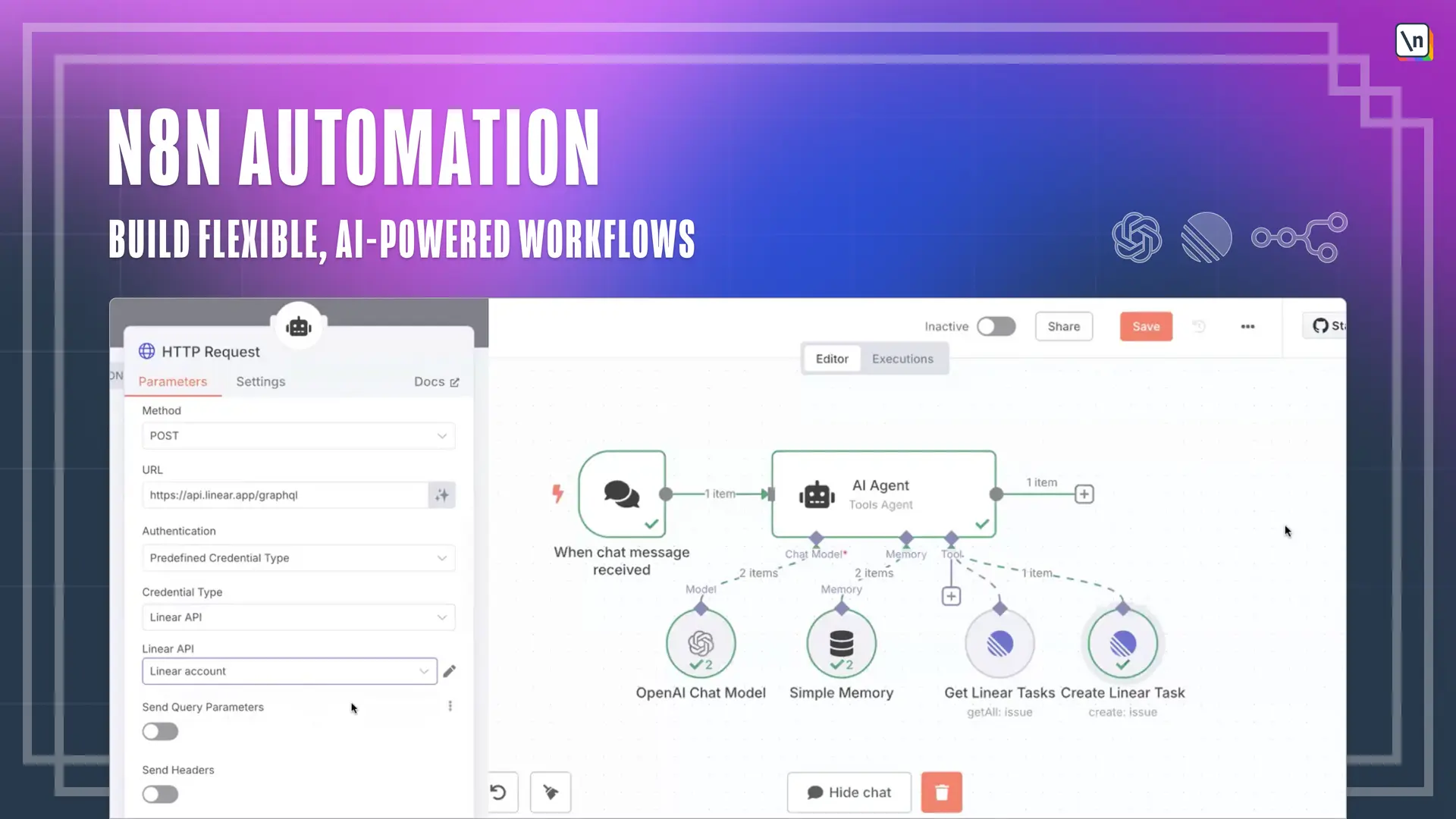This lesson preview is part of the n8n Automation: Building AI-Powered Workflows course and can be unlocked immediately with a \newline Pro subscription or a single-time purchase. Already have access to this course? Log in here.
Get unlimited access to n8n Automation: Building AI-Powered Workflows, plus 90+ \newline books, guides and courses with the \newline Pro subscription.

[00:00 - 00:08] So here we are in our terminal. First of all, let's check that we have correct node version installed.
[00:09 - 00:17] That's fine. Next, let's finally run npx n8n and see what's going to happen.
[00:18 - 00:37] This is automatically, we'll download all the packages and start the intent instance on your local machine. In your case, when you launch it for the first time, it might take much more time than it took for me just to download everything and to set everything up.
[00:38 - 00:55] Also, once you launch your nata and instance, for example, you load it, you hit control C, everything will be saved locally. So you can launch it this script again later on and you will have everything in place.
[00:56 - 01:07] For us, there are two options to open N&M, finally, we can click this link, like local host and we just can't click all. Let's click all for simplicity.
[01:08 - 01:13] And boom, here's magic. The N&M is opened.
[01:14 - 01:25] In your case, when you launch it for the first time, you might be greeted with this window. You need to sign up.
[01:26 - 01:39] I believe that's easy. And after you've signed up, a small tip from me and it might be asking you about where you work or something like that, it's necessary to share the information.
[01:40 - 01:45] After you've signed up, you can skip all the other questions in Chrome. So you sign up, skip.
[01:46 - 01:57] And after that, you should be able to see the UI next. Let's start from the small overview of what exactly going on here.
[01:58 - 02:10] We are right now inside of the overview tab on the left side. Here, where all of our workflows will be gathered, you can see under workflow stop, right now, you have only one.
[02:11 - 02:18] Next to the workflow, we have credentials. Once we click on the credentials, we can see all of the credentials that we have in place right now.
[02:19 - 02:37] So we can connect to the different platforms using API. Next click, for example, on OpenAI, here, we can see that we can, for example, click, replace it with other API key, save it, so everything can be managed and updated here.
[02:38 - 02:56] And as we launched it, you can see connection tested successfully, which is cool, because as we create any API, as we are in any API keys, the, and it then automatically checks the connection and if everything will keep, which is really useful. I like it.
[02:57 - 03:02] And the next step is executions. This is just the history of all of your workflow executions.
[03:03 - 03:09] So we can go and check if everything was working correctly or just curious about history. It's already up to you.
[03:10 - 03:13] Below, we can see variables. You don't really need this.
[03:14 - 03:20] This is can be used for to store and access data across different workforce. Right now we're learning about just one workflow.
[03:21 - 03:29] Let's not add additional complexity, but if you need one, you can use one. Another part is templates.
[03:30 - 03:40] Really love it, because you can actually download workflows and automations from other people. This is good for learning.
[03:41 - 03:56] And this is good for exploring something that you might want, build yourself. So maybe it's already built out there and you can just go copy it to make it in your shape or form and use the automation.
[03:57 - 04:05] Once again, super cool for learning and for practical usage. So you can take your time and check it out once you're interested.
[04:06 - 04:09] But let's get back to the overview section. Let's, you know what?
[04:10 - 04:14] Let's start everything from scratch. Let's delete our previous workflow completely.
[04:15 - 04:24] And this is actually what you're going to see when you're opening an event for the first time. So there are a couple of options.
[04:25 - 04:37] You can start from scratch clicking here or you can click create new workflow in the corner. It's basically the same, no issue at all to be just one of it.
[04:38 - 04:51] Let's click start from scratch, for example. Once this is the canvas that you're going to work with, right now it's empty because there's still nothing added, right?
[04:52 - 05:05] There are a couple of points that I want to talk here right now that as you're working with your automations, you can see the same button. So don't forget to click the same button once in a while.
[05:06 - 05:10] So you don't lose your progress. And also the canvas is completely movable.
[05:11 - 05:14] You can see a small preview here. So it's super easy to navigate.
[05:15 - 05:25] And if you zoom in, zoom out so you would be able to see where it's exactly, what's and roughly understand the structure if you're building some really big autom ations and really complex plan.